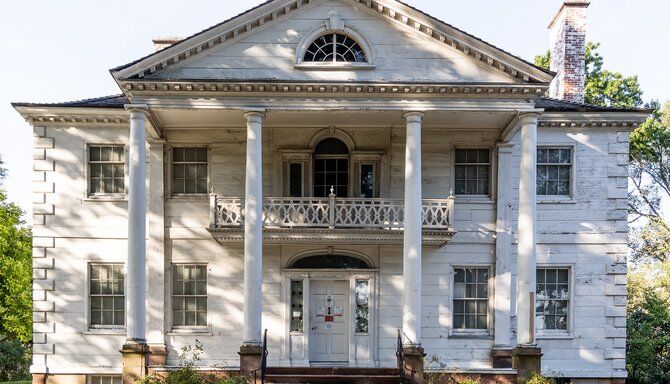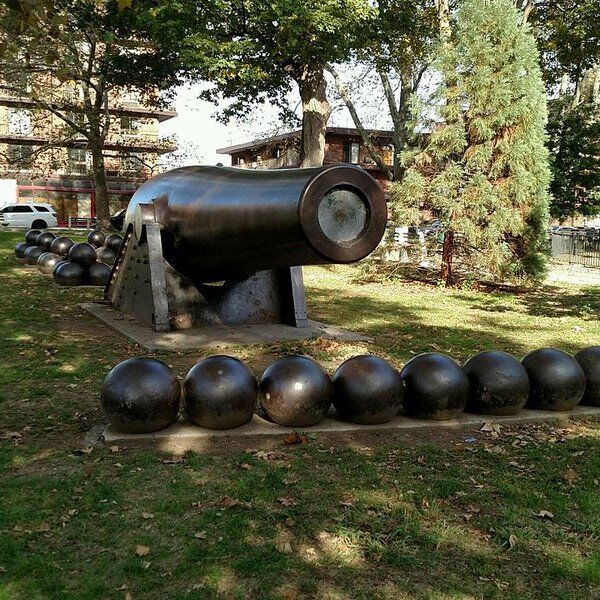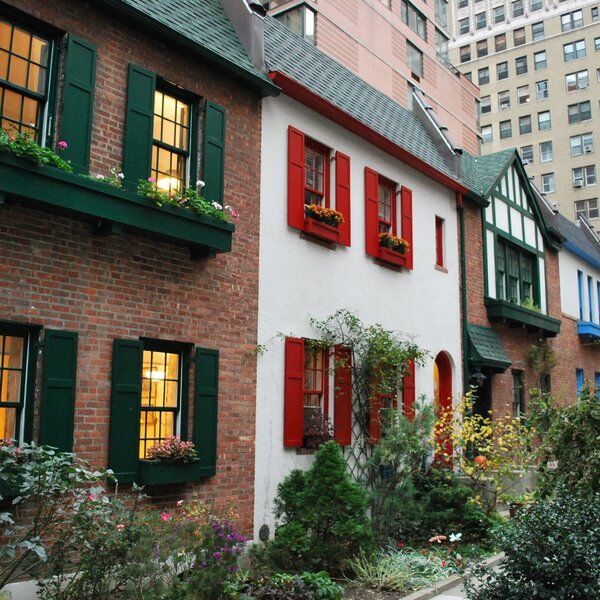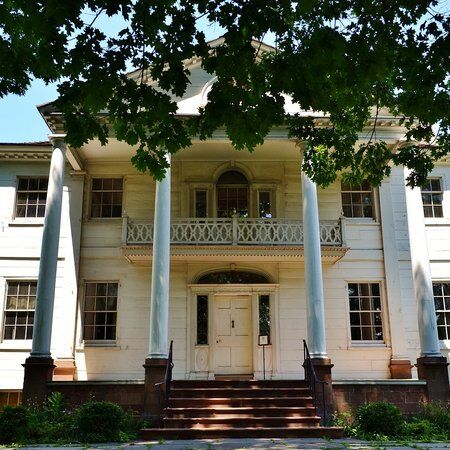
Exploring the Morris-Jumel Mansion
Perched atop Coogan's Bluff, at 65 Jumel Terrace, in the Washington Heights neighbourhood of Upper Manhattan, the Morris-Jumel Mansion is an 18th-century Palladian style building that commands attention. Constructed in 1765, it has had various occupants and names over the years, such as the Morris House, Mount Morris, and Jumel Mansion.
Today, the mansion holds the distinguished honour of being the oldest surviving house in Manhattan. As a National Historic Landmark and a New York City landmark, it is under the custodianship of the New York City government, and welcomes visitors as a museum.
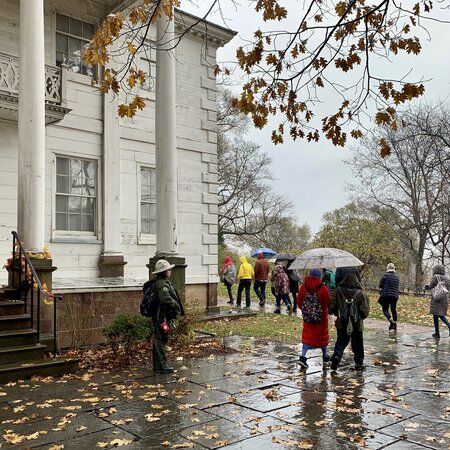
Creating the Morris-Jumel Mansion
Architecture
While its architect remains anonymous, influences from 16th-century Italian architect Palladio are unmistakable in its exterior design. Originally structured with Georgian-style plans, the mansion underwent a transformative remodelling in the Federal style during the Jumel era around 1810. Notably, its orientation perpendicular to the Harlem River predates Manhattan's street grid, highlighting its existence as the city's oldest surviving house.
Exterior
The mansion is made up of two distinct sections: a main house and an octagonal annex, possibly the first of its kind in America. Constructed with a wooden frame and brick exterior walls, the mansion has an interestingly rustic appearance with decorative quoins on its corners.
The south side has a double-height portico supported by grand Tuscan columns, believed to be an original feature of the construction. Additional architectural highlights include asymmetrical chimneys and a hip roof punctuated by dormer windows.
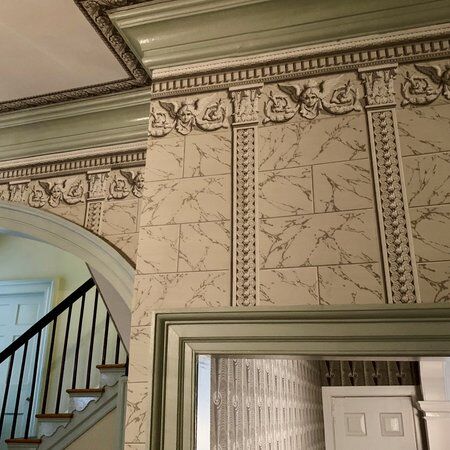
Roger Morris Park
Spread over 1.52 acres, the Roger Morris Park is the only surviving remnant of the expansive Morris estate. There are winding brick pathways and a sunken garden, designed during a Works Progress Administration renovation, in an octagonal layout reminiscent of the mansion's annex.
Interior
Combining Federal, Georgian, and Palladian elements, the mansion's interior layout features a raised basement and three above-ground stories. The house has essential spaces such as a parlour, library, dining room, bedrooms, and expansive central hallways. Excavated from solid rock, the basement originally accommodated servants' quarters and other amenities including a kitchen, laundry, and wine cellar.
Today, the museum recreates the setting with period furnishings and personal artefacts belonging to its former occupants. Subsequent to its conversion into a museum, a section of the basement now serves as a residence for the caretaker.
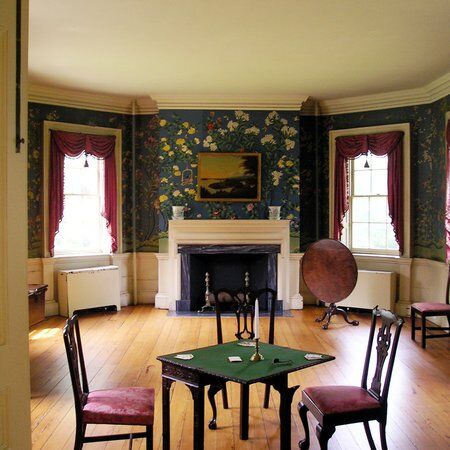
The History of the Morris-Jumel Mansion
The Morris Ownership
In 1765, Roger Morris, a retired British Army officer, purchased the land and commenced construction on what would become the Morris-Jumel Mansion. Inspired by rural retreats, Morris envisioned a summer residence for his family. Completed by 1770, the Mansion served as the home for Roger Morris, his wife Mary Philipse Morris, and their children.
However, their residency was short-lived due to the outbreak of the American Revolutionary War in 1775. As Loyalists, the Morrises fled America, leaving their estate vulnerable to confiscation by revolutionary forces.

During the Revolutionary War Era
In 1776, General George Washington and his officers sought refuge in the abandoned mansion after the Continental Army's retreat from Brooklyn following a loss in battle. The mansion's elevated location and spacious interior made it an ideal command centre during the war, and it was used for approximately five weeks. Washington occupied the second story of the Octagonal Room as his office. It's believed that he even slept in what is now known as the William Chase bedroom, accompanied by his enslaved valet, William Lee.
The mansion continued to be a focal point for military operations, housing troops and commanders, including General William Heath and later English General Sir Henry Clinton. Even auxiliary German mercenary soldiers, known as Hessians, found temporary lodging within its walls under the command of Baron von Knyphausen. Remarkably, the Morris-Jumel Mansion is one of the few remaining structures in the nation to have housed all sides of the conflict during the Revolutionary War.
Tavern Period & Washington’s Return (1780s-1790s)
Following the American Revolution, Mary Morris, one of only three women accused of treason in New York, faced the confiscation of her property under the Act of Attainder of 1779. Consequently, the Morris-Jumel Mansion and its grounds were sold, witnessing a series of uses, including a tavern, stagecoach stop, and inn for travellers between 1783 and 1810, amidst periods of abandonment and tenancy by farmers.
During July 1790, President Washington, accompanied by members of his future cabinet and their families, returned to the mansion for a dinner party. Attendees included Thomas Jefferson, John Adams, Alexander Hamilton, and their spouses, along with Martha Washington. In his journal, Washington remarked on the house's condition, noting it was "in possession of a common farmer" at the time.

The Jumel Ownership (1810-1865)
Purchased in 1810 by the affluent French merchant Stephen Jumel and his wife Eliza Bowen Jumel, the Morris-Jumel Mansion was transformed. Under Stephen and Eliza's ownership, the mansion hosted many guests such as Napoleon and Josephine Bonaparte during their time in Paris.
Despite efforts to integrate into New York's elite social circles, rumours of scandal and intrigue concerning ELiza’s humble origins surrounded the couple, with Stephen's mysterious death in 1832 casting a shadow over the mansion.
Following Stephen's passing, Eliza's marriage to former Vice-President Aaron Burr ended in divorce and yet more scandal. Now a wealthy recluse, Eliza spent her final years in the mansion, haunted by her past and rumoured to roam its halls in a state of dementia. There were many tales of her unconventional behaviour and eccentricities circulating among neighbours and visitors and she passed away alone in 1865.
The Morris-Jumel Mansion After Eliza’s Death
Following Eliza’s death, ownership of the estate fell into the hands of her sister’s children, triggering a lengthy legal feud that lasted 17 years. Eventually, the mansion was inhabited by the pioneering French photographer Augustine Le Prince and his family. Le Prince had ambitious plans to showcase the first moving motion picture at the mansion but mysteriously vanished before realising his dream.
The mansion then became the home of General Ferdinand Earle and his family, who renamed it Earle Cliff. Lillie Earle, Ferdinand’s wife, advocated for the preservation of the historic site after his passing, leading to its purchase by the City of New York.

The Haunting of Morris-Jumel Mansion
Even in death, Eliza's spirit is said to roam the halls, alongside other ghostly apparitions, from the Revolutionary War, servants, and even former residents like Aaron Burr and George Washington. Visitors and staff alike have reported eerie experiences, from disembodied voices and phantom footsteps to inexplicable sightings.
Paranormal experts, including renowned investigators like Hans Holzer and Zak Bagans, have delved into the mansion's mysteries, conducting séances and investigations to uncover the truth behind its haunted reputation.
The Morris-Jumel Mansion as a Museum
Acquisition and Operation
In 1904, the city of New York took ownership of the Morris-Jumel Mansion, where it soon found its place on the National Register of Historic Places. Today, the iconic building, under the stewardship of the New York City Department of Parks & Recreation, is operated by Morris-Jumel Mansion Inc., a nonprofit organisation established in 1904. Dedicated to curating exhibits and collections, the museum relies on grants, event revenue, and admission fees for funding, with an annual budget averaging $250,000 as of 2014.
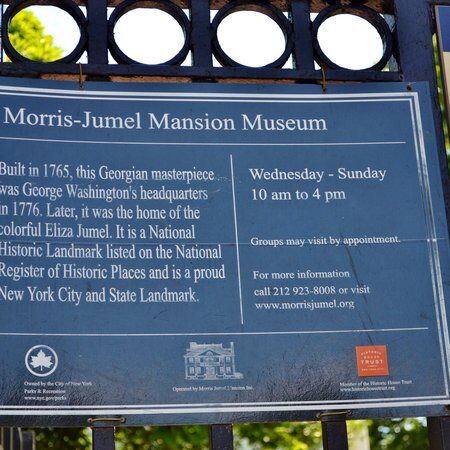
Collection and Exhibits
Upon its opening, the museum had a diverse collection including Thomas Sheraton furniture, pewter lamps, Revolutionary War relics, and 19th-century artefacts such as a woman's calash. Over time, the collection expanded to include objects associated with historical figures like Aaron Burr, as well as mementos from various eras loaned from private collectors and other institutions.
Temporary exhibits have ranged from displays of Revolutionary War-era objects to showcases of items manufactured by women. Recent exhibitions have focused on the house's history and historical portraits of Washington Heights residents.
Events and Programs
Throughout its history, the mansion has witnessed many events, including lawn parties, lectures, receptions, Flag Day ceremonies, Revolutionary War reenactments, and open houses. In recent decades, the museum has continued to offer an array of activities such as concerts, themed suppers, children's workshops, and ghost tours. Regular programs include Family Day events, online "parlour chats," workshops, and art shows.

Discover More of New York with CityDays
Discover New York’s secret sites and noteworthy nooks by playing one of our New York treasure and scavenger hunts, escape room games or walking tours.
You’ll find curated trails and hunts all over New York, including Manhattan, Chelsea, Midtown and Chinatown.
All you have to do is team up with your friends, family or whoever to solve riddles, complete challenges and answer trivia to lead you on an unforgettable journey around New York’s most intriguing streets.
The best part? We’ll recommend top-rated bars, cafés and restaurants and give your team the chance to earn rewards by competing on our leaderboard.
CityDays gives you total freedom to start and finish whenever you like, take extra breaks if you want or need them, and it’s suitable for people of all ages.
You’re also guaranteed your money back if you don’t have an amazing time - although our previous reviews speak for themselves: we’re rated 5/5 on TripAdvisor and 4.95/5 on Google Reviews!
